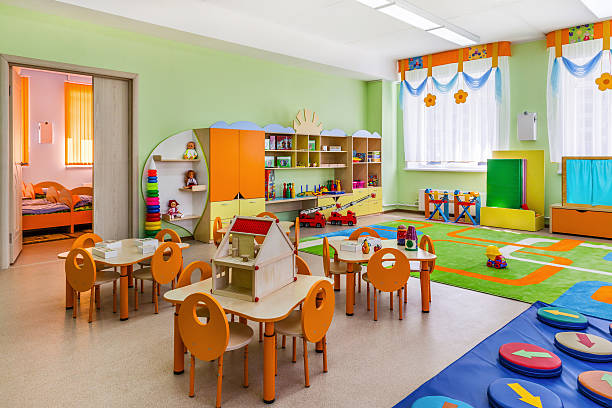In an increasingly hectic world, we all crave calmness. Amid mounting pressures and constant distractions, many ask: Is virtual reality meditation actually reducing stress levels? Surprisingly, the answer may be a heartfelt yes. However, the journey matters more than the destination. Therefore, let’s explore stories, science, and strategies—with empathy and authenticity.
1. A Fresh Start: Why This Question Resonates
First, stress is everywhere—from emails pinging to deadlines looming. Then, enter VR meditation: a peaceful sanctuary in a headset. Yet, honest readers deserve more than hype. That leads us to the core question: Is virtual reality meditation reducing stress? Step by step, we’ll uncover the truth.
2. Real-Life Voices: Stories That Speak Volumes
Before diving into specific examples, it’s important to note that these real experiences reveal not only the emotional depth of VR meditation but also tangible shifts in well-being. Furthermore, they show us that stress relief via VR isn’t just theoretical—it’s happening in real time, to real people.
Parents at Hospital Bedsides
For example, at Stanford Medicine, anxious parents who tried a six-minute VR meditation noticed a dramatic 30% drop in their anxiety. One Spanish-speaking mother described feeling “calm and comfortable,” even long after removing the headset.
College Students Under Pressure
Moreover, a study of 49 university students immersed in virtual nature scenes found immediate relief from anxiety and depression. Encouragingly, these effects lasted a full week.
Physicians on the Edge
Next, in a pilot with emergency-room doctors, brief VR mindfulness breaks significantly reduced stress spikes, offering critical, real-time relief.
When we ask, is virtual reality meditation actually reducing stress levels? The stories suggest it’s making a meaningful difference.
3. What the Research Shows: Numbers and Nuance
Before we break down the data into study types, it’s crucial to understand that current findings blend promise with practicality. Indeed, VR meditation shows consistent benefit, but with nuances we should clearly acknowledge.
a. Systematic Reviews & Meta-Analyses
A 2025 JMIR protocol is already reviewing RCTs measuring VR mindfulness against standard methods for stress, anxiety, and depression.
Even earlier reviews found VR boosting engagement, lowering dropouts, and offering comparable benefits to traditional mindfulness.
b. Direct Comparisons
In a crossover study, VR and tablet meditation significantly reduced stress (≈7-point STAI drop) and lowered heart rate (~5 bpm), although only VR altered participants’ time perception, making sessions feel shorter.
Furthermore, Korean research indicates VR meditation outperforms silent meditation or smash-room VR in stress relief.
c. Clinical Populations
In a small trial of individuals with Major Depressive Disorder and Generalized Anxiety Disorder, immersive VR meditation over 10 weeks improved emotional regulation as measured by HeartMath biofeedback.
Altogether, this evidence strongly addresses the key question: Is virtual reality meditation actually reducing stress levels? The answer is compellingly affirmative.
4. Mechanisms: How and Why It Works
Firstly, VR immerses the senses, creating a “being there” effect. As a result, it diverts attention from everyday worries and anchors focus on calming visuals and soothing audio.
Secondly, VR elicits emotional warmth. Users often report feelings of comfort and joy, responses that amplify stress relief. Additionally, studies confirm physiological responses: decreased heart rate, reduced electrodermal activity, and lower stress hormone levels.
Meanwhile, for beginners, VR acts as a compassionate guide. Instead of battling wandering thoughts, users can follow guided visual cues and breathe. In sum, these factors—immersion, emotion, physiology, guidance—all help answer the question: Is virtual reality meditation actually reducing stress levels? Yes, by design.
5. Who Reaps the Greatest Benefits?
- Caregivers under pressure, such as hospital staff or parents, find meaningful anxiety relief.
- Students and professionals, facing deadlines, achieve mental clarity and emotional balance.
- Mental health patients, including those with depression or generalized anxiety, gain structured symptom relief.
- Meditation newcomers benefit from user-friendly, immersive introductions that make mindfulness feel more fun.
6. What We Should Watch: Limitations & Warnings
- Small sample sizes (often fewer than 50 participants) necessitate larger RCTs.
- Mixed comparisons: Some studies show VR and audio-only meditation bring similar physiological results.
- User comfort issues, like VR fatigue or mild dizziness, appear occasionally.
- Not a magic bullet: systematic reviews counsel VR as one tool, rather than a full therapy substitute.
So again, here’s our central question: Is virtual reality meditation actually reducing stress levels? It is, yet it is also supplemental—not standalone—therapy.
7. Best Practices: How to Use VR Mindfully
- Start with short sessions (5–15 minutes) to avoid fatigue.
- Opt for beginner-friendly content, like calm beaches or forests.
- Use quality, comfortable headsets to prevent discomfort.
- Track your progress, using simple stress logs or wearables.
- Mix formats: combine VR with breathing exercises, journaling, or traditional meditation.
By following these steps, and remembering our key query, is virtual reality meditation actually reducing stress levels? —You can adopt VR as a sustainable, soothing ritual.
8. A Peek Ahead: Where VR Meditation is Headed
- Meta-analyses are coming, synthesizing more robust data.
- AI personalization will tailor VR scenes based on real-time emotions.
- Clinical integration: Platforms like VR meditation are moving toward formal therapy inclusion.
- Biometric feedback loops (e.g., HRV-based modifiers) may make experiences responsive and adaptive.
Again, as we keep asking, is virtual reality meditation actually reducing stress levels?, Signs point to even greater impact ahead.
9. Reflective Close: An Invitation to Calm
Finally, let’s loop back to that central question: Is virtual reality meditation actually reducing stress levels? For many people, the answer is convincing. Immersive visuals, emotional resonance, and measurable calm combine into something truly nourishing.
However, this is just the beginning. We invite readers to imagine slipping into a virtual mountaintop at day’s end, breathing in unfiltered peace. Then, notice: the heart slows, the mind unwinds, the spirit softens. That moment answers the question more poetically than any statistic ever could.
To embrace this, all it takes is curiosity—and a gentle step toward calm.
10. VR Forest Bathing: Nature’s Embrace in a Headset
Moreover, virtual reality forest bathing is gaining attention as a powerful stress reducer. A recent study compared walks through high-fidelity VR forests versus barren virtual rooms. Results showed that realistic nature environments significantly elevated mood and reduced perceived stress, even without actual trees present. As a result, many users report feeling refreshed, as if they truly walked among pines or beside a stream. Consequently, VR forest bathing becomes an accessible, immersive method to ask again: Is virtual reality meditation actually reducing stress levels? Early data suggests—absolutely.
11. Popular VR Meditation Apps: What Users Love (and Why)
In addition, multiple commercial VR apps consistently receive high praise for relaxation and stress relief. For instance, “Guided Meditation VR” offers over 40 environments and 30 hours of content, earning Meta Store’s “App of the Year”. Likewise, the Oculus Go and Gear VR app user survey shows strong satisfaction ratings, highlighting immersive audio-visuals and guided support. Therefore, when we ask, is virtual reality meditation actually reducing stress levels? —These consumer favorites suggest a positive, engaging experience that resonates emotionally and consistently with users.
Your Next Step: Try VR Calm
Explore apps like Nature Treks VR, Calm Place, or guided Oculus Quest meditation sessions.
Start small—5 minutes a day. Then ask yourself: Is virtual reality meditation actually reducing stress levels for me? Because ultimately, this is a question you’ll answer best from within—with honesty, calm, and an open heart.

















Leave a comment